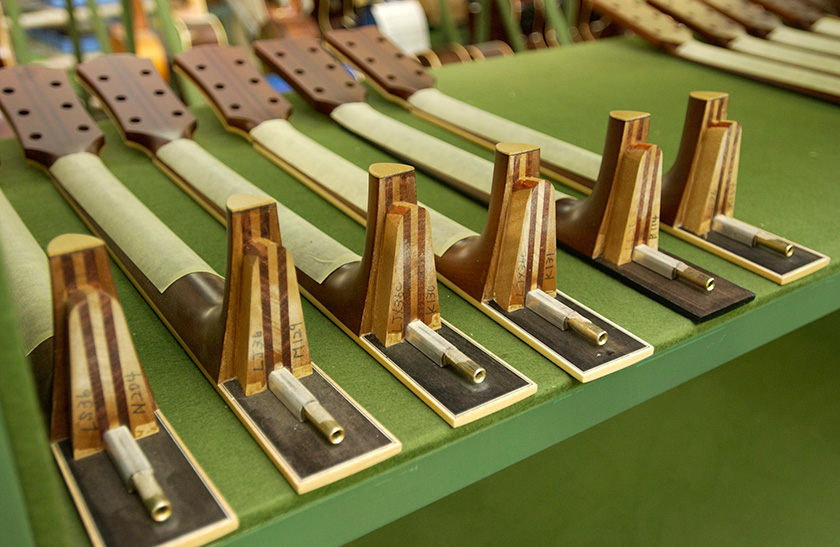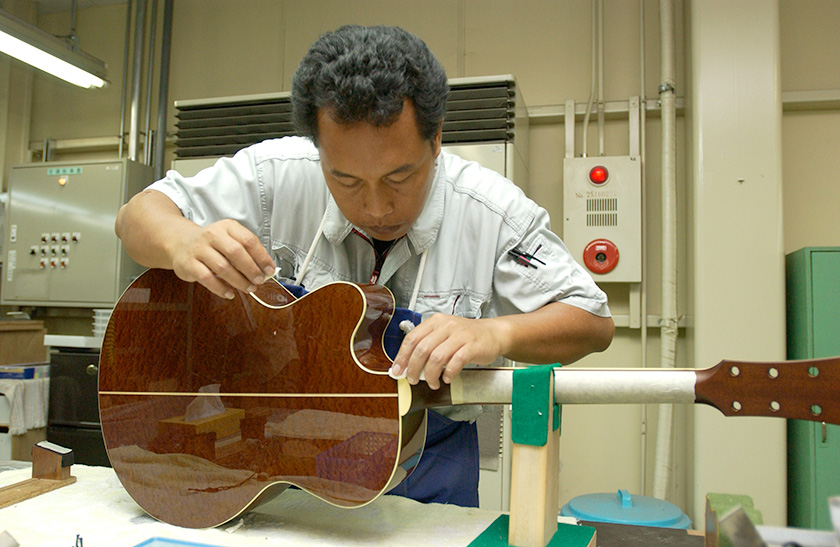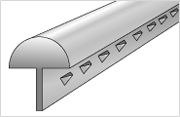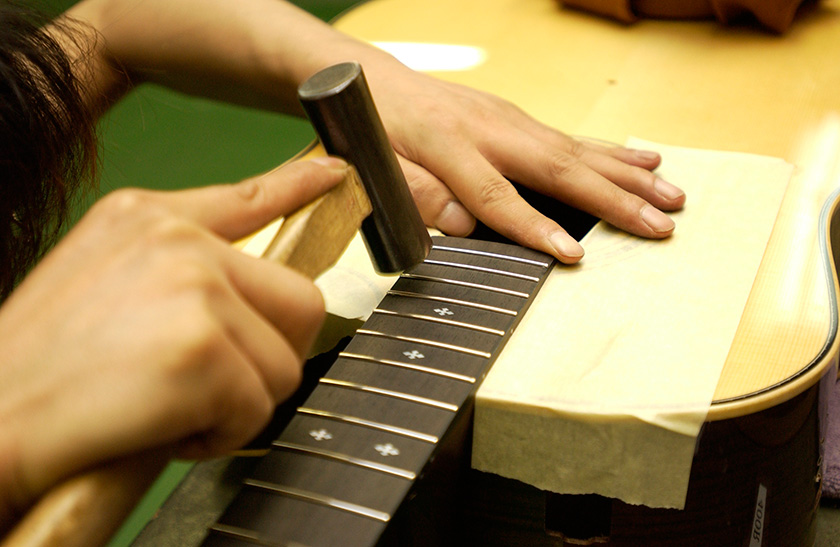How the Acoustic Guitar is Made
The final stretch!
The neck and body are finally joined
After being coated and polished the guitar is looking quite nice. Next, the neck and body are joined at last. The luthier makes sure that the neck and body are tightly joined with adhesive. This ensures that the structure is strong and that the instrument transmits sound well.

Coated necks; the iron cores are visible

Joining the neck and body-no misalignment allowed!
Hammering the frets
Next, frets made from a nickel silver alloy are hammered into the fingerboard. Each fret has a foot (around 3 mm) that is lined with alternating triangular studs. This structure allows it to catch in the fingerboard, fixing it in place. Although guitars typically have 20 frets, each fret has a different width since the neck grows thicker toward the body.

Frets are rounded on the top and feature multiple studs jutting from a foot in the center of the part

Frets are hammered into the fingerboard
Musical Instrument Guide : Acoustic Guitar Contents
Structure
How the Instrument is Made
Choosing an Instrument
Trivia
- The guitar top is actually two panels stuck together
- The shape of the pick guard is dictated by the manufacturer
- Collector's item with a modern Japanese style
- Cutaways make it easier to access upper frets
- Why do the spaces between frets grow narrower down the neck?
- The order guitars and violins are strung in differs
